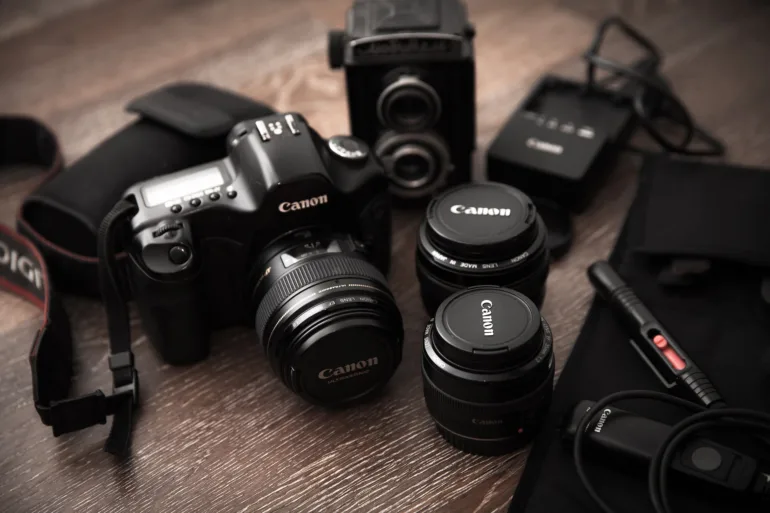TL;DR:
- Boris Eldagsen, a German photographer, declined a Sony World Photography award due to the partial reliance on AI technology in the winning image.
- Eldagsen is advocating for separate judging categories for photography and AI-generated images in competitions.
- The image was part of the “Pseudomnesia” series and was created through a collaborative process involving AI image generators and underwent 20 to 40 rounds of editing.
- Eldagsen informed the World Photography Organisation of the AI origins of the image, but this information was not included in the announcement of the winner.
- Eldagsen’s refusal of the award sparked important conversations about the future of photography and the place of AI technology in the art form.
- At the award ceremony, Eldagsen posed the question about the image’s AI origins and argued that AI-generated images should not be considered photography and should not be judged in the same competitions.
- Eldagsen is calling for an open discussion to determine what constitutes photography and what does not.
- Eldagsen’s refusal of the award aims to accelerate the ongoing debate about the place of AI technology in the photography industry and is making a significant contribution to shaping its future.
Main AI News:
In a bold move, Boris Eldagsen, a German photographer who claimed a coveted Sony World Photography award, has turned down the prize due to its partial reliance on AI technology. In an effort to differentiate photography from AI-generated images, Eldagsen is advocating for separate judging categories in competitions.
Eldagsen was honored as the winner in the creative category of the open competition for his work, “The Electrician,” on March 14. Part of the “Pseudomnesia” series, or “Fake Memories,” the image was crafted through a collaborative process involving AI image generators and underwent 20 to 40 rounds of editing.
Boris Eldagsen’s decision to decline the Sony World Photography award sparked a lively debate in the photography community about the role of AI technology in the art form. Despite initial confusion surrounding the origin of his winning image, Eldagsen revealed that he had informed the World Photography Organisation of the “co-creation” process using AI generators before the win was announced.
According to Eldagsen, he entered the competition without specifying the image’s production process in December 2022 and only provided details after he was shortlisted. Upon learning of his win, Eldagsen offered to engage in open discussions about the differences between AI-generated images and traditional photography.
Despite Eldagsen’s transparency and willingness to discuss the matter, the World Photography Organisation did not include information about the image’s AI origins in the announcement of the winner. In a statement, the group emphasized their support for experimental approaches in the creative category, including digital practices, and explained that they had approved Eldagsen’s entry based on the information he provided.
As a result of Eldagsen’s stance, the World Photography Organisation has removed his information and image from their website. Nevertheless, the photographer’s bold move has sparked important conversations about the future of photography and the place of AI technology in the art form.
In a dramatic move at the April 13 award ceremony in London, Boris Eldagsen sparked a critical conversation about the role of AI in photography. Upon receiving his Sony World Photography award for the creative category, Eldagsen thanked the judges but posed the question, “How many of you knew or suspected that it was AI generated? Something about this doesn’t feel right, does it?”
Eldagsen’s refusal of the award was a bold statement in support of separating AI images from traditional photography. He argued that AI-generated images should not be considered photography and should not be judged in the same competitions.
In making this decision, Eldagsen hopes to ignite a broader discussion about what constitutes photography and what does not. He revealed that his initial intention in entering the competition was to test the organization’s readiness for AI images and stated that “they are not.”
Through his refusal of the award, Eldagsen aims to accelerate the ongoing debate about the place of AI technology in the photography industry. He is calling for an open discussion to determine what is considered photography and what is not. By taking a stance on this issue, Eldagsen is making a significant contribution to shaping the future of photography and the role of AI in the art form.
Conlcusion:
Boris Eldagsen’s refusal of the Sony World Photography award due to the image’s reliance on AI technology has sparked a crucial discussion about the future of photography and the place of AI in the art form. The photographer’s bold stance has raised important questions about what constitutes photography and what should be considered separate.
The World Photography Organisation’s decision to remove Eldagsen’s information and image from its website highlights the ongoing debate about the role of AI in photography. Eldagsen’s refusal of the award is a significant contribution to shaping the future of photography and the role of AI in the industry. It is clear that the photography community must engage in open discussions to determine what is considered photography and what is not in order to ensure the art form remains true to its roots.

